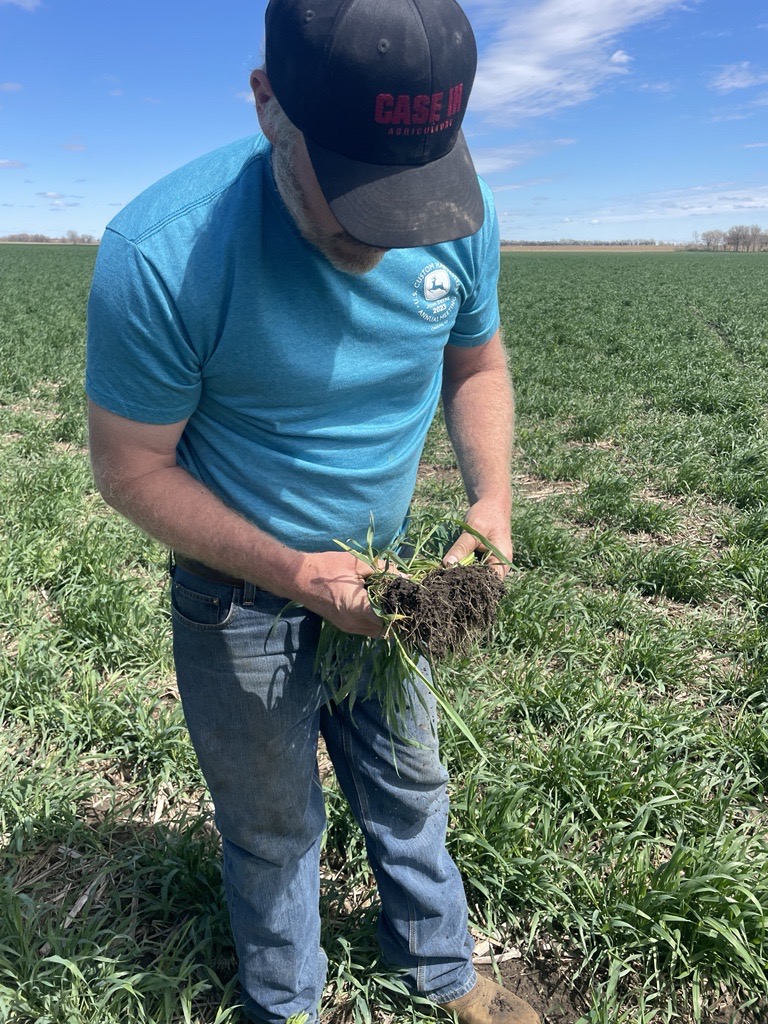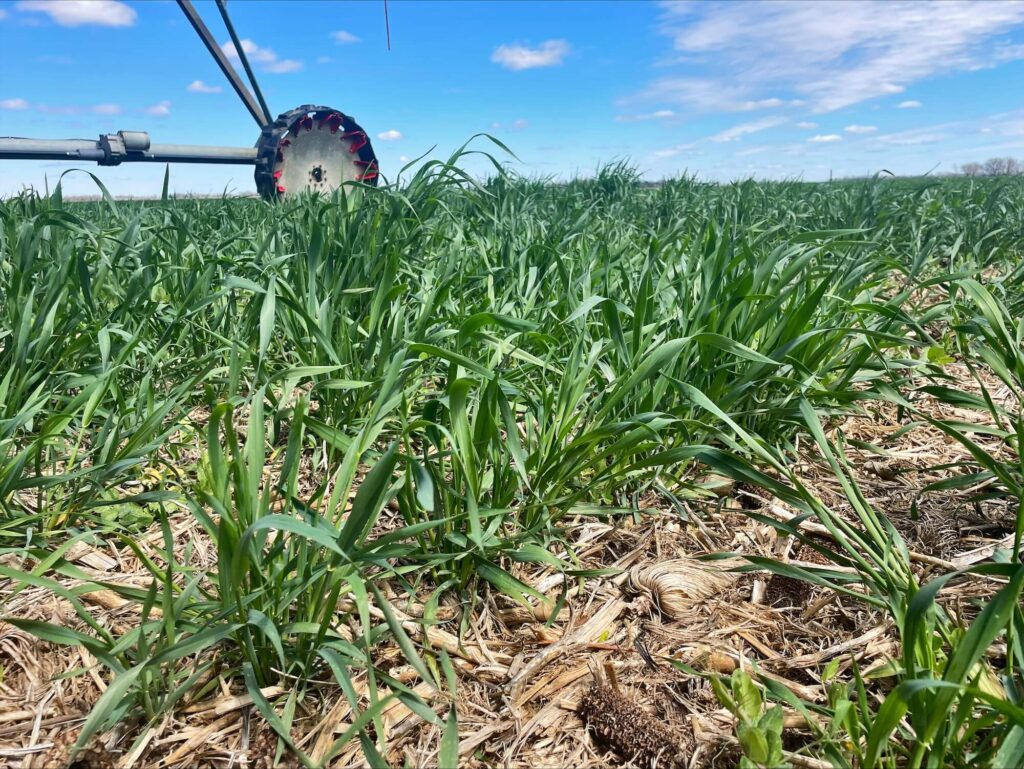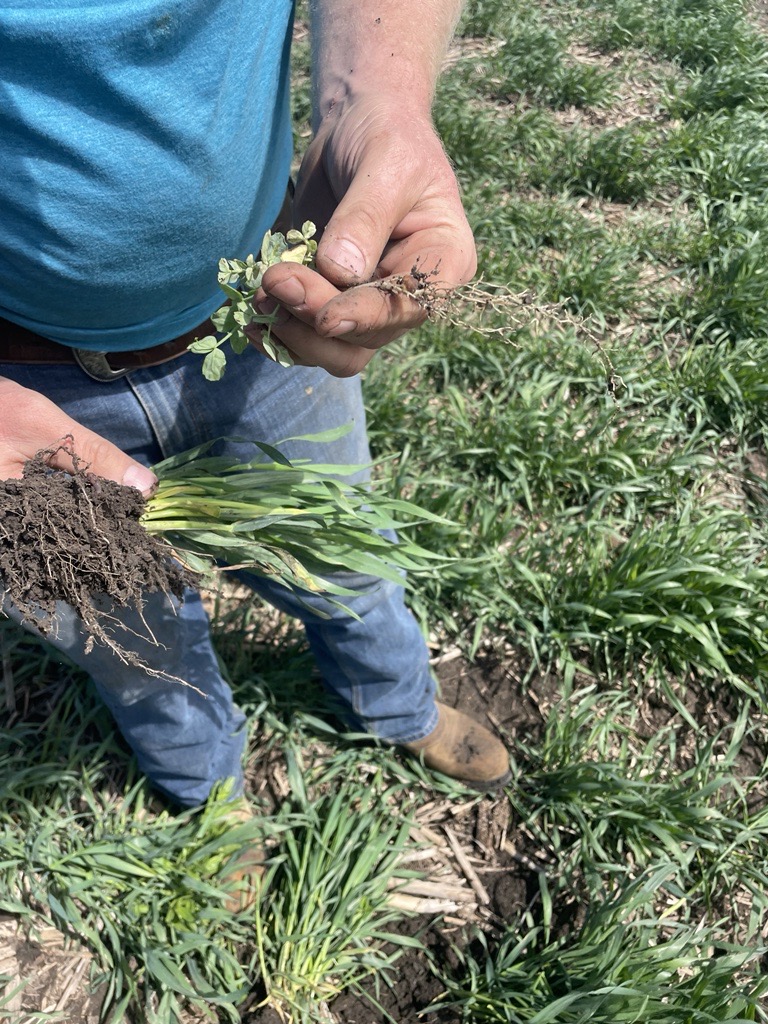In the fall of 2020, Jesse Williams purchased his first field and began running a farm, an 80-acre pivot irrigated farm near Osceola, Nebraska. As the son of a farmer in Virginia’s Chesapeake Bay, Jesse understood the challenges of farming and was prepared to tackle some of his farm’s issues, such as low-lying fields prone to flooding. Additionally, he traveled around the Midwest in his day job as a combine specialist and had the opportunity to meet with farmers and discuss successes and trials in agriculture.
In the first two growing seasons, Jesse had issues with soil crusting and excessive weeds which made plant emergence difficult. He decided to utilize data to tackle these challenges so he grid-sampled the field, pulling close to 30 soil samples. Armed with the field data and guidance from his long-time friend and extension agent, he planted cover crops in 2021 – growing a rye cover (after soy) which helped choke out the weeds and minimize the chances of flooding in low lying areas. The next year, he joined an EcoHarvest project in Nebraska recruited by on-the-ground implementation partner, The Nature Conservancy (TNC). In that first year, he received $20/acre from the EcoHarvest/TNC project to adopt regenerative practices and layered with additional cost-share through the Regional Conservation Partnership Program (RCPP) with the USDA’s Natural Resources Conservation Service (NRCS).
In addition to the financial benefits that come through incentive payments for practice changes, reduced inputs and precision ag significantly reduced operating costs. Using data from satellite imagery, Jesse practices customized fertilizer application based on crop needs as opposed to a blanket distribution, which reduces the amount of fertilizer he applies.
Leveraging the cost-share from the Nebraska Soil Carbon Project, Jesse has been able to grow the size of his operation and transition to farming full time. Jesse is an innovator and continues to improve the efficiency of his crop production by testing new tools through on-farm research and adaptation.
“Programs like ESMC, especially when complemented by other cost-sharing programs, help create a buffer to experiment with different conservation and regenerative practices”
– Jesse Williams



